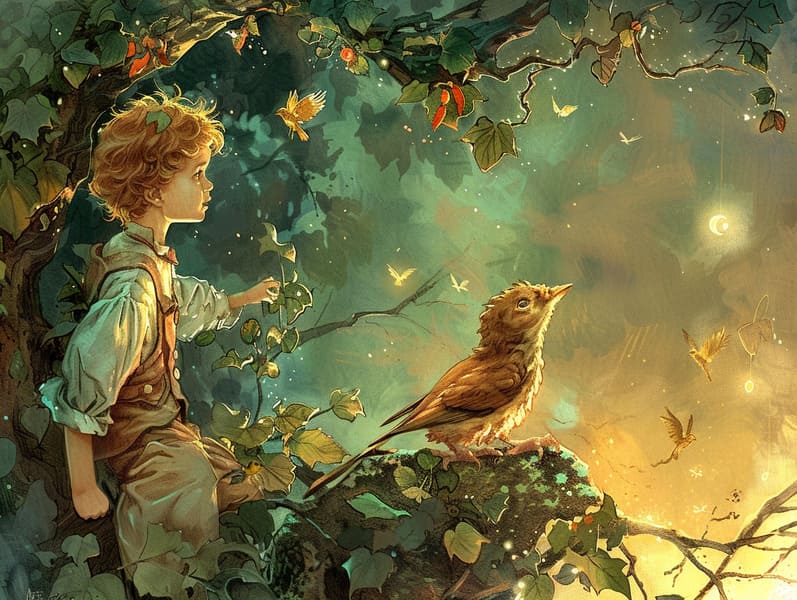The Evolution of Best Fairy Tales and Their Unfading Attraction.
The Evolution of Best Fairy Tales and Their Unfading Attraction.
Blog Article

Historical fairy tales have long histories. These narratives have been relayed from one generation to the next centuries before they were ever transcribed. They originated from a variety of backgrounds, including American traditions. They were initially transmitted among older generations, often carrying themes and messages mirroring the societal norms and beliefs of the time.
The renowned Brothers Grimm, the two Grimm brothers, were among the first to compile many of these beloved stories. Their published works, "Grimm's Fables," included stories like "Ashenputtel," "Little Brother and Little Sister," and "Snow White," which have since become cornerstones in the world of classic fairy tales. Similarly, the Danish author's enchanting narratives, such as "The Mermaid," and "The Little Duckling," have gained the love worldwide, ensuring their place in the pantheon of famous fairy tales.
Despite their historical roots, classic fairy tales remain as applicable as ever, especially as kids' bedtime tales. These charming stories are now available in numerous formats, including gorgeously illustrated books, delightful animations, and digital fairy tales.
Their lasting presence can be credited to several whimsical characteristics:
Life Lessons: Classic fairy tales often whisper important moral lessons. Tales like "The Wolf and the Liar" teach the importance of sincerity, while "The Hare and the Tortoise" exemplify the virtues of resolve and unassuming nature. These tales offer the young clear distinctions between virtue and vice, building their moral compass in a soft yet profound way.
Compassion and Knowledge: Fairy tales frequently involve individuals facing challenges and struggles, motivating readers to connect with their struggles and support their triumphs. For instance, "Beauty and the Beast" illustrates the significance of seeing inner beauty to comprehend the inner core of a character, cultivating compassion and insight.
Cultural Recognition: Many traditional fairy tales are infused with the cultural contexts from which they originated. Discovering these stories can provide captivating looks into different historical contexts, developing a sense of global appreciation and comprehension.
Inventiveness and Fantasy: The extraordinary elements in traditional fairy tales—mythical entities—kindle children’s imaginations. These stories transport readers to imaginary realms, fostering creative ideas and a sense of marvel that lasts a lifetime.
Classic read more fairy tales are not only mesmerizing but also didactic. They work as delightful tools in promoting various cognitive and emotional skills in young ones. When ancient fairy tales are narrated, they promote speech development by teaching new terms and meanings and complicated sentence structures. This practice also strengthens hearing abilities and mental focus, as the young pay close attention, keen to see what happens next.
Furthermore, contemplating the themes and characters of classic fairy tales can advance problem-solving abilities and analytical skills. Kids are instructed to recognize patterns, guess what will happen, and catch on to cause and effect. These discussions also aid little ones say their thoughts and feelings, advancing their emotional intelligence.
In today’s digital age, the availability of internet fairy tales has made these narratives more accessible than ever. Internet sites and programs provide extensive collections of ancient fairy tales that can be browsed or heard anytime, anywhere. Fairy tales narrated are particularly prevalent, providing an entertaining method for kids to experience these captivating stories. Sound books and read-out-loud stories take characters and settings to life, often augmented by fantastical soundtracks and harmonies that boost the storytelling journey.
The lasting allure of timeless fairy tales lies in their ability to shift to today's world while keeping their key morals. Contemporary takes of these stories often highlight more representative characters and modern settings, making them relevant to today’s audience. However, the basic principles of boldness, generosity, and truth remain unchanged, continuing to influence kids of all ages.
Fairy tales also offer a sense of familiarity and predictability. They highlight a ordered narrative with a apparent beginning, middle, and end, often ending with the wrap-up of conflicts and the triumph of virtue over vice. This steadiness can be reassuring for young ones, affording a sense of solidity in an unstable world.
Classic fairy tales continue to enchant and coach new generations, maintaining their elegance and relevance in modern society. As children's night stories, they grant access to a perfect blend of delight and instruction, cultivating moral values, empathy, and creativity. The accessibility of online storybooks and the commonness of fairy tales read aloud confirm that these classic stories remain available to new generations.
By retaining and circulating these stories, we continue to venerate the rich tapestry of myths and cultural heritage. Whether you are browsing a richly illustrated book, seeing a online library, or listening through an spoken story, the charm of children's fairy tales is always within reach. These fairy tales teach us of the unending presence of storytelling and its ability to connect us across centuries and lands.
Whether you are enjoying a artistically illustrated book, browsing a web-based collection, or hearing an audio story, the allure of Grimm's fairy tales is always within reach.
These tales show us of the invariable presence of stories and its ability to join us across eras and regions, creating a bond that delights and instructs alike.